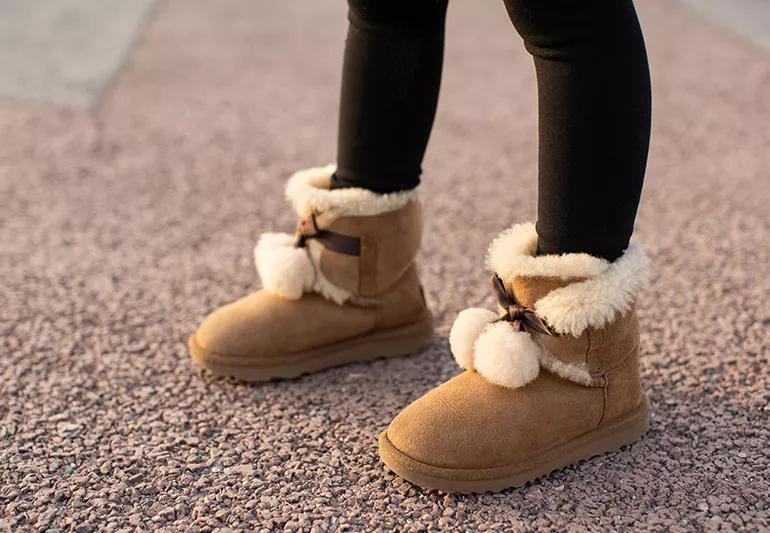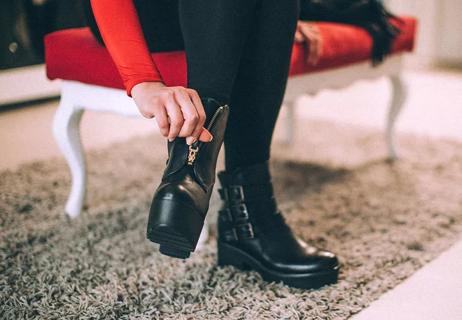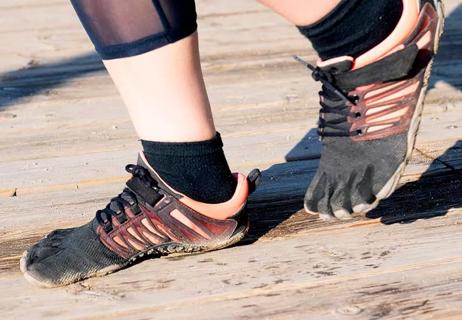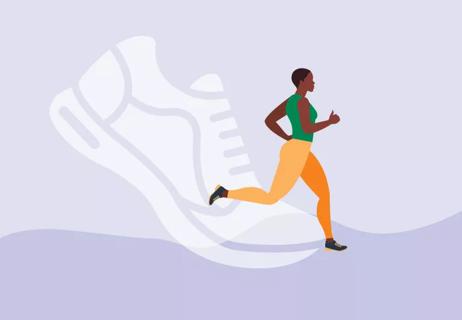The lack of arch support in the popular footwear can lead to numerous aches and pains

Sheepskin boots may be warm, cozy and oh-so-adorable, but behind that comfy cuteness lies this cold, hard fact: The popular footwear can be brutal on your feet.
Advertisement
Cleveland Clinic is a non-profit academic medical center. Advertising on our site helps support our mission. We do not endorse non-Cleveland Clinic products or services. Policy
The fashionable boots typically offer zilch when it comes to arch support, which can bring both temporary pain and long-term consequences. And that fuzzy lining? It’s the perfect environment for … well, some pretty gross stuff.
So, before you decide to make shearling boots your everyday footwear, let’s have a healthy chat with podiatrist Nicole Nicolosi, DPM.
If you peek inside a pair of sheepskin boots, you’ll notice something about the insole: “It’s usually completely flat without any sort of structural support for the arch of your foot,” says Dr. Nicolosi.
So, why is it important to give your arches some assistance? Basically, because they’re doing a lot of work. Your arches distribute pressure evenly across your feet to keep you upright and moving. They provide flexibility, strength and stabilization.
“Giving your arches support is important for the proper alignment of your feet,” explains Dr. Nicolosi. “If the support isn’t there, that can result in altered mechanics as you walk around.”
And if your gait is off day after day after day, there can be serious consequences.
“I give the analogy of a car,” says Dr. Nicolosi. “If your car is out of alignment, you get more wear on certain tires. It’s the same with your feet. If they’re out of alignment, you get more wear in certain joints.”
Advertisement
In the short-term, that can lead to aches in your ankles, knees, hips and back. Long-term, it can result in arthritis. (Issues tend to be worse if you have flat feet, too.)
If footwear doesn’t come with arch support, you can add your own. Placing orthotic inserts inside of your sheepskin boots can provide some stability for your feet where little existed, says Dr. Nicolosi.
That extra bit of support can help you avoid a rolled-ankle walking style labeled the “UGG® shuffle” after one of the more popular shearling boot brands.
An added bonus, too: Inserts add cushion beneath your feet to absorb the shock of each step.
Basic orthotic inserts can be purchased online or at various stores for as little as $25. Prescription orthotics customized to match the specific contours of your feet also are a pricier option.
Toes and feet certainly love the toasty feeling offered by shearling boots. Unfortunately, bacteria and fungi are pretty fond of it, too.
Sweaty feet tucked into the fuzzy interior of sheepskin boots create ideal conditions for bacteria and fungi to grow and thrive, notes Dr. Nicolosi. That can lead to you getting infections and rashes such as:
Another result? “Bacteria lets you know it’s there by an odor,” says Dr. Nicolosi. “So your boots may end up smelling pretty bad.”
Sheepskin boots are soooo soft and comfortable that you may be tempted just to stick your bare foot inside. Resist the urge, says Dr. Nicolosi. “Wearing socks can help limit your exposure to any bacteria in the boots.”
Regular cleaning of your boots can keep them fresh and bacteria-free, too.
So, it’s pretty clear that there are a few potential health issues when it comes to wearing shearling boots. But that doesn’t mean you need to leave your UGG®, Bearpaw®, Emu® or other fashionable fuzzy boots in the back of your closet.
“They shouldn’t be your choice for daily footwear,” says Dr. Nicolosi, “but that doesn’t mean you can never wear them.”
So, if you simply love the look of sheepskin boots, try to:
Advertisement
To hear more from Dr. Nicolosi on this topic, listen to the Health Essentials Podcast episode, “Talking Foot Health and Shoes.” New episodes of the Health Essentials Podcast are available every Wednesday.
Advertisement
Learn more about our editorial process.
Advertisement

Look for good cushioning, sturdy arch support and quality material

Leaving footwear on invites germs, bacteria, toxins and other unwanted guests into your home

If they don’t fit well in the store, they won’t fit any better at home

One thing is for sure: This footwear definitely kicks up controversy

The years can literally reshape your feet

Dulling feeling in your feet could cause problems

Tips for finding your perfect running shoe

Pick shoes that make your feet happy and are good for your overall health

Start having sex about 72 hours before ovulation, then at least every other day during your fertile window

Attachment theory suggests that your earliest relationships shape connections throughout your life

It isn’t a recognized mental health disorder, but research shows that problematic social media use can negatively affect your mental health, self-esteem and sleep